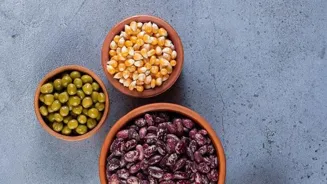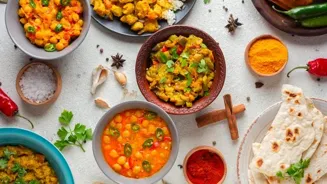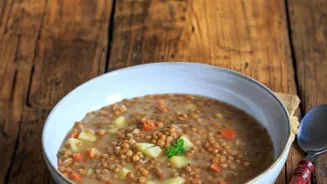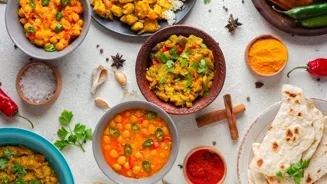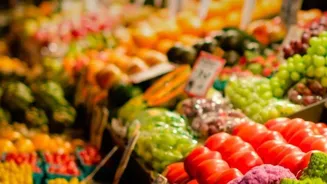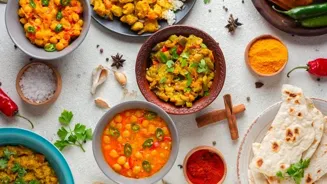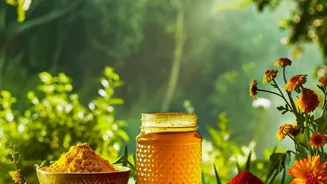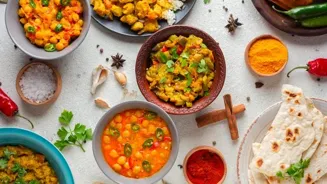Unveiling the Richness of Indian Dals: A Culinary Journey Awaits! Delve into the heart of Indian cuisine with legumes. 🌿
Legumes, or dals as we lovingly call them in India, are the unsung heroes of our
cuisine. From the creamy dal makhani of the North to the tangy sambar of the South, dals form the very foundation of countless delicious and nutritious dishes.
They are not just a staple; they are a way of life, deeply ingrained in our culture and traditions. But beyond their culinary importance, dals are also nutritional powerhouses, packed with protein, fiber, and essential minerals.
Learning to cook with legumes is like unlocking a treasure trove of flavors and health benefits. Don't be intimidated by the sheer variety; with a few simple techniques, you'll be whipping up amazing dal dishes in no time.
The versatility of cooking with dals in Indian cuisine
The beauty of cooking with dals lies in their versatility. You can experiment with different spices and flavors to create a unique dish every time. The aroma of simmering dal, tempered with ghee, mustard seeds, and curry leaves, is enough to transport you to the heart of an Indian kitchen.
Each region boasts its own signature dal recipes, showcasing the culinary diversity of our country. Whether you prefer a simple, comforting bowl of dal chawal or a more elaborate dal served at a celebratory feast, there's a dal dish out there for everyone.
Mastering the art of cooking dals is a journey of culinary exploration, a way to connect with your roots and embrace the rich heritage of Indian cuisine.
Explore diverse dals for varied flavors and dishes
Before you embark on your dal-cooking adventure, it's important to familiarize yourself with the different types of legumes available. Each dal has its unique flavor, texture, and cooking time.
Some common varieties include: Toor dal (split pigeon peas), a yellow dal with a slightly nutty flavor; Masoor dal (red lentils), a quick-cooking dal that becomes creamy when cooked; Moong dal (split yellow lentils), a light and easily digestible dal, often used to make khichdi; Urad dal (black lentils), used in the famous dal makhani and idli batter; Chana dal (split chickpeas), a dense and slightly sweet dal, used in curries and sweets.
Experimenting with different dals is key to finding your favorites and expanding your culinary repertoire.
Soaking dals before cooking improves digestibility and reduces cooking time
Soaking your dals before cooking is a crucial step that often gets overlooked. Soaking helps to reduce cooking time, improve digestibility, and remove phytic acid, which can inhibit nutrient absorption.
A general rule of thumb is to soak dals for at least 30 minutes, or up to a few hours, depending on the variety. After soaking, rinse the dals thoroughly under running water. Cooking the dals is the next step. You can use a pressure cooker, a slow cooker, or a regular pot on the stovetop.
The cooking time will vary depending on the dal and the method used. The key is to cook the dals until they are tender and easily mashed. Once the dals are cooked, it's time for the magic of tempering, also known as tadka.
Tadka adds flavor by infusing spices into cooked dal
The tadka is where the real flavor comes in. It involves heating oil or ghee in a small pan and adding spices such as mustard seeds, cumin seeds, asafoetida, dried red chilies, and curry leaves. Once the spices start to splutter and release their aroma, pour the tadka over the cooked dal.

The hot oil infuses the dal with the flavors of the spices, creating a symphony of taste and aroma. Adjust the spices according to your preference. Some people like a fiery tadka with plenty of chilies, while others prefer a milder, more fragrant tadka with subtle notes of cumin and coriander.
Tips for perfect dal: roast dals, use quality spices, avoid overcooking, adjust consistency
Achieving the perfect dal requires a little bit of practice and attention to detail. Here are a few tips and tricks to help you on your way: Roast your dals before cooking. Roasting adds a nutty flavor and enhances the taste of the dal.
You can dry roast the dals in a pan for a few minutes until they turn slightly golden. Use good quality spices. The quality of your spices can make a big difference in the flavor of your dal. Use freshly ground spices whenever possible. Don't overcook the dal.
Overcooked dal can become mushy and lose its texture. Cook the dal until it is tender but still holds its shape. Adjust the consistency of the dal to your liking. Add more water if you prefer a thinner dal, or cook it for longer if you prefer a thicker dal.
Add a squeeze of lemon juice or a dash of amchur (dried mango powder) to add a touch of tanginess to the dal.
Explore diverse regional dal recipes across India
Once you've mastered the basic techniques of cooking with dals, it's time to explore the diverse regional dal recipes of India. Each region has its own unique variations and flavor combinations.
Some popular regional dal dishes include: Dal Makhani (Punjab), a creamy and rich dal made with black lentils and kidney beans, simmered overnight on a slow fire; Sambar (South India), a tangy and flavorful lentil-based vegetable stew, made with toor dal, tamarind, and a variety of vegetables; Dal Tadka (North India), a simple and flavorful dal made with toor dal, tempered with ghee, cumin seeds, and dried red chilies; Panchratna Dal (Rajasthan), a hearty dal made with five different types of lentils; Chana Masala (North India), a spicy and flavorful chickpea curry.
Experiment with regional recipes for culinary exploration
Experimenting with different regional recipes is a great way to expand your culinary horizons and discover new flavors. Don't be afraid to try new things and adapt the recipes to your own taste. You can also create your own signature dal dishes by combining different dals, spices, and vegetables.
AI Generated Content. Glance/InMobi shall have no liability for the content